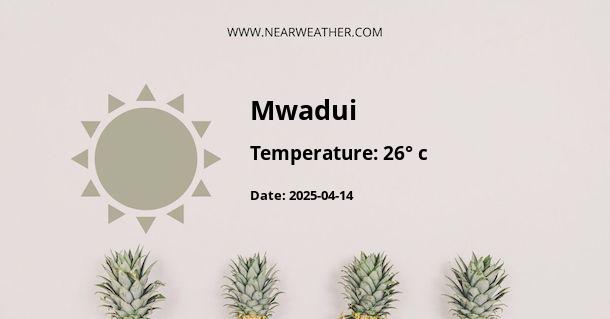Introduction
Mwadui, a small town situated in the Shinyanga Region of Tanzania, is known for its unique climate and weather. A thorough understanding of the climate of Mwadui, Tanzania, is crucial for both residents and visitors alike. It helps in planning travel, agricultural activities, and also in understanding the local culture shaped by the weather patterns.Overview of Mwadui's Climate
Mwadui experiences a tropical savanna climate, characterized by two distinct seasons - the dry season and the wet season. The Köppen-Geiger climate classification system classifies Mwadui's climate as Aw.
“The tropical savanna climate typically features warm to hot temperatures throughout the year, with significant rainfall discrepancies between the wet and dry seasons.”
Temperature Overview
The yearly temperature in Mwadui ranges from 20°C to 33°C. The warm season usually lasts from September to March, with an average daily high temperature above 31°C. The hottest month of the year is October, with an average high of 33°C and low of 22°C. The cool season lasts from June to August, with an average daily high temperature below 28°C. The coldest month is July, with an average high of 27°C and low of 16°C.Rainfall Overview
The region witnesses significant seasonal variation in monthly rainfall. The rainy period of the year lasts from November to April, with a sliding 31-day rainfall of at least 60 millimeters. The most rain falls during the 31 days centered around March 28, with an average total accumulation of 131 millimeters. The dry period lasts from May to October, with a sliding 31-day rainfall of less than 20 millimeters.Humidity and Wind
Mwadui experiences extreme seasonal variation in the perceived humidity. The windier part of the year lasts for 6.4 months, from September 26 to April 9, with average wind speeds of more than 5.6 miles per hour. The windiest day of the year is November 27, with an average hourly wind speed of 7.3 miles per hour.
Climate Patterns and Agricultural Activities
- The dry season (May to October) is characterized by lower humidity and less rainfall, making it ideal for farming activities such as planting and harvesting.
- The wet season (November to April) brings higher humidity and increased rainfall, which is beneficial for crop growth but can sometimes result in flooding.
Visiting Mwadui
When planning a visit to Mwadui, it's essential to consider the climate and seasonal weather patterns. The best time to visit Mwadui for ideal weather conditions is during the dry season, which offers warm temperatures and relatively low rainfall. However, for those who enjoy the lush greenery and blooming flowers that come with the rains, the wet season can be an equally appealing time to visit.
Conclusion
Understanding the climate and weather of Mwadui, Tanzania, is essential for various reasons, from planning travels and agricultural activities to appreciating the local culture that is deeply intertwined with these weather patterns. In a nutshell, Mwadui's climate, characterized by a tropical savanna climate, is a fascinating aspect of this Tanzanian town that significantly impacts its local life and ecosystem.
A - Mwadui's Latitude is -3.550000 & Longitude is 33.599998.
A - Weather in Mwadui is 25° today.
A - Climate Conditions in Mwadui shows overcast clouds today.
A - Humidity in Mwadui is 63% today.
A - Wind speed in Mwadui is 16.67 km/h, flowing at 115° wind direction. today.
